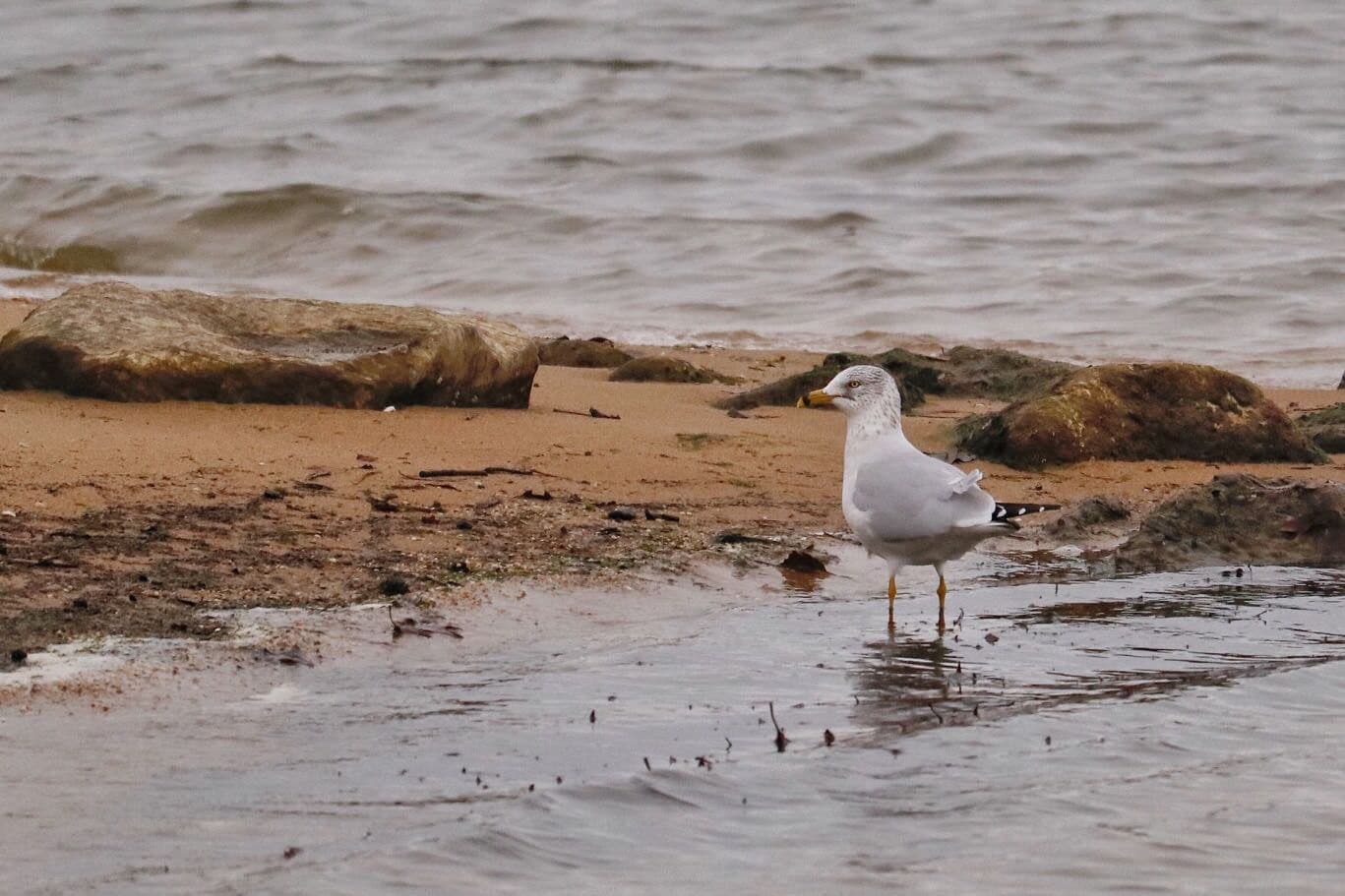
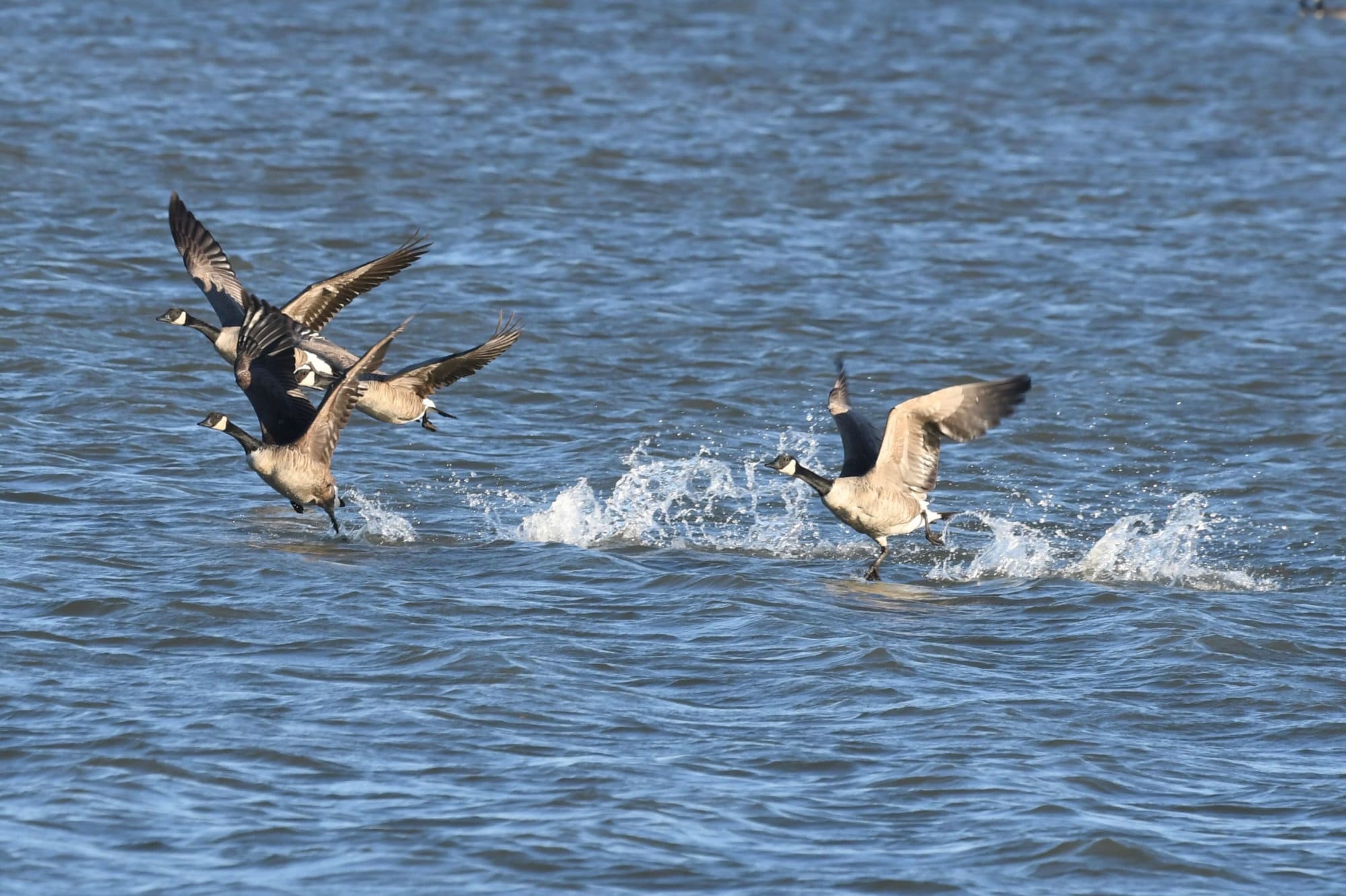
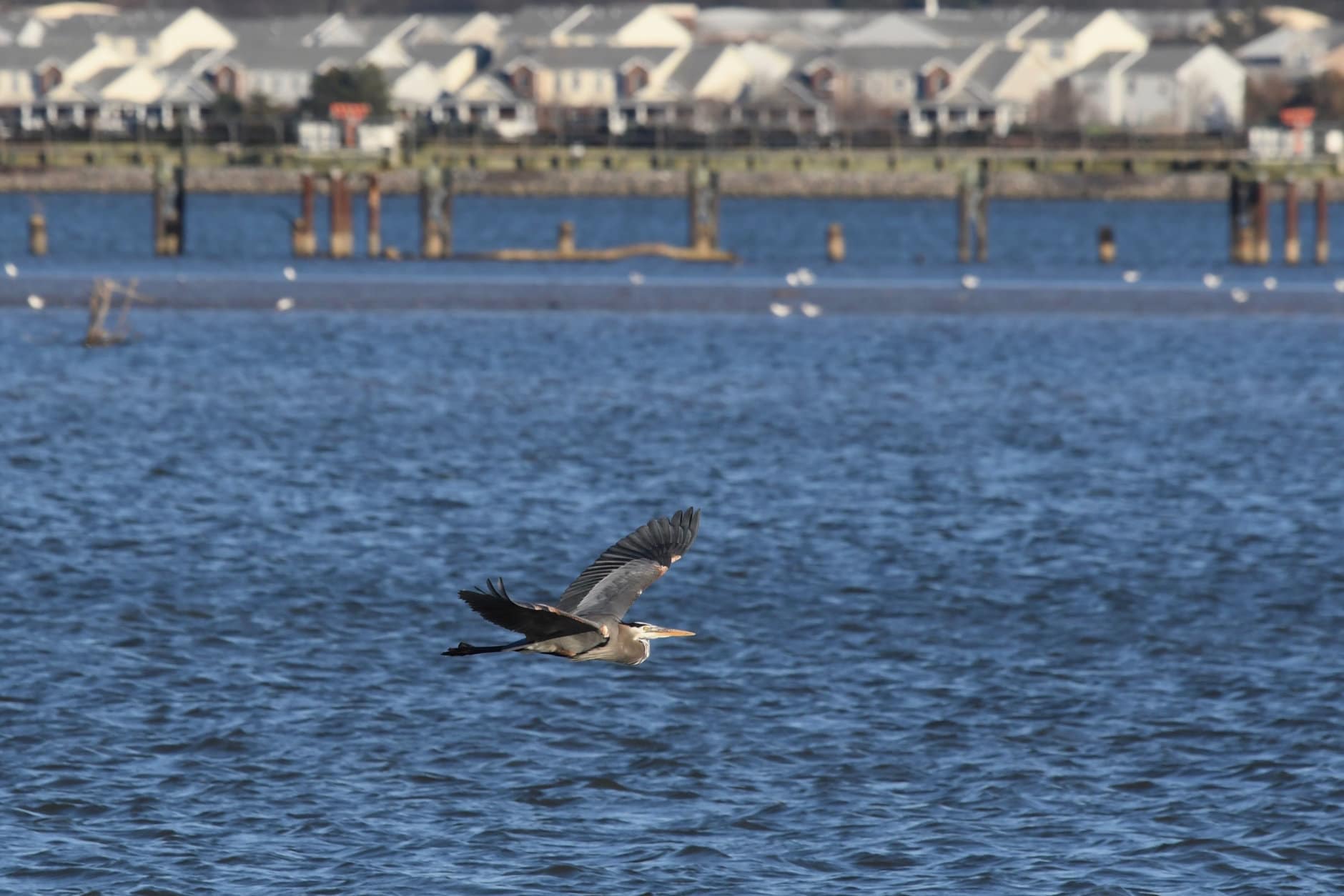

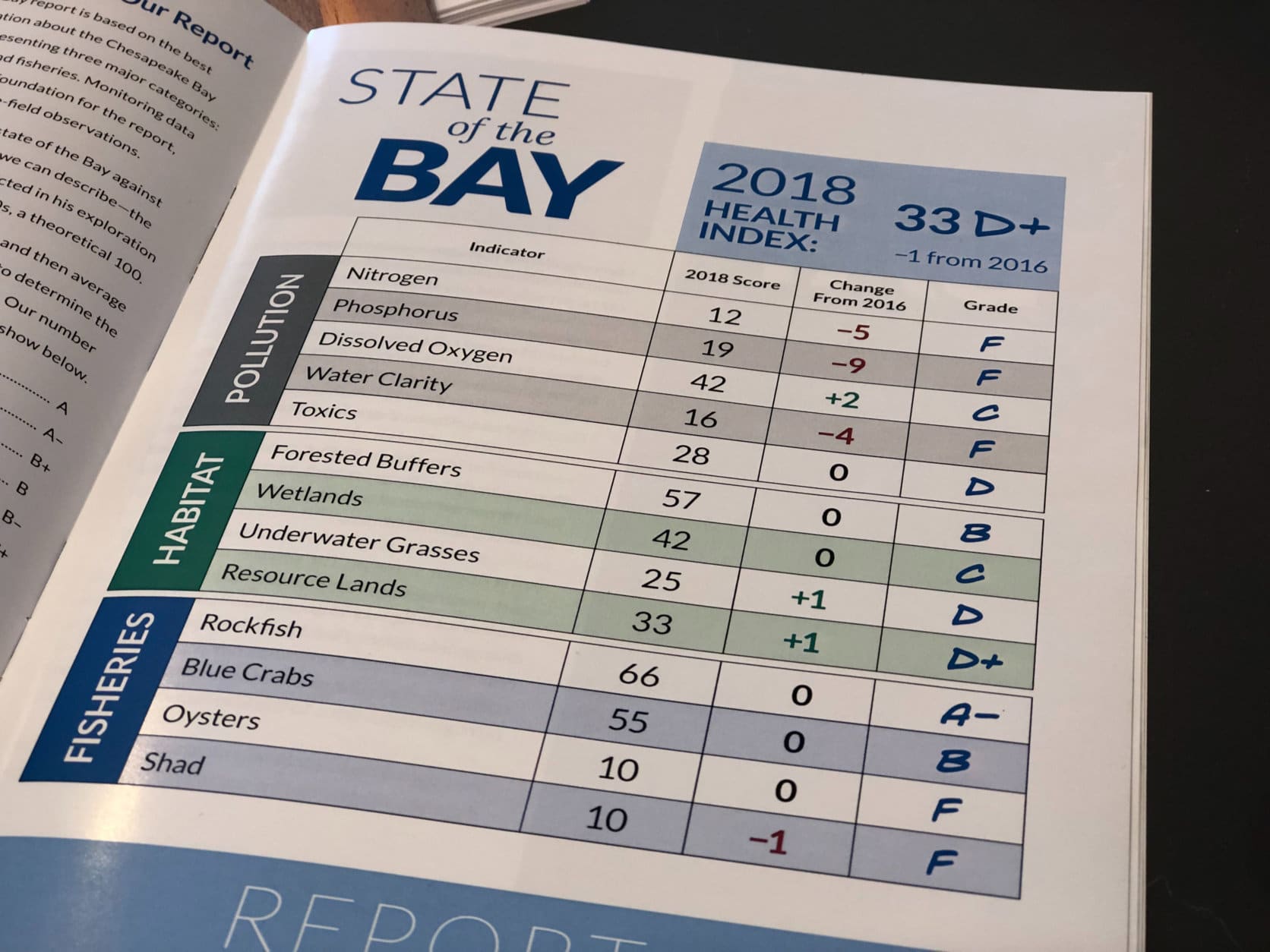
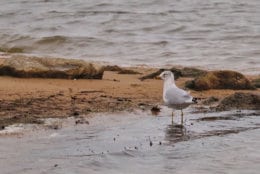

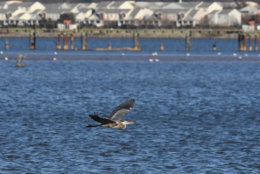

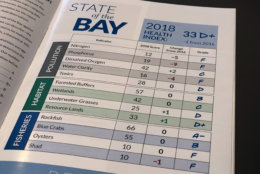
ANNAPOLIS — An environmental organization rated the health of the Chesapeake Bay at a D-plus, down from a C-minus in 2016.
Will Baker, president of the Chesapeake Bay Foundation, said the region’s record rainfall had a lot to do with the downgraded rating: “The record-breaking rainfall just brought too much pollution into the bay this year.”
The C-minus in 2016 was the first time in decades the health of the watershed climbed out of the D range.
The foundation’s 2018 State of the Bay report is divided into categories; pollution, habitat and fisheries.
In the area of pollution, the bay took the biggest hit in the grading system because of the surge in nitrogen and phosphorous, much of that a result of agricultural runoff. “The good news is, it’s the least expensive pound of pollution to reduce,” Baker said, adding that changes in agricultural practices can make a positive difference in the health of the watershed.
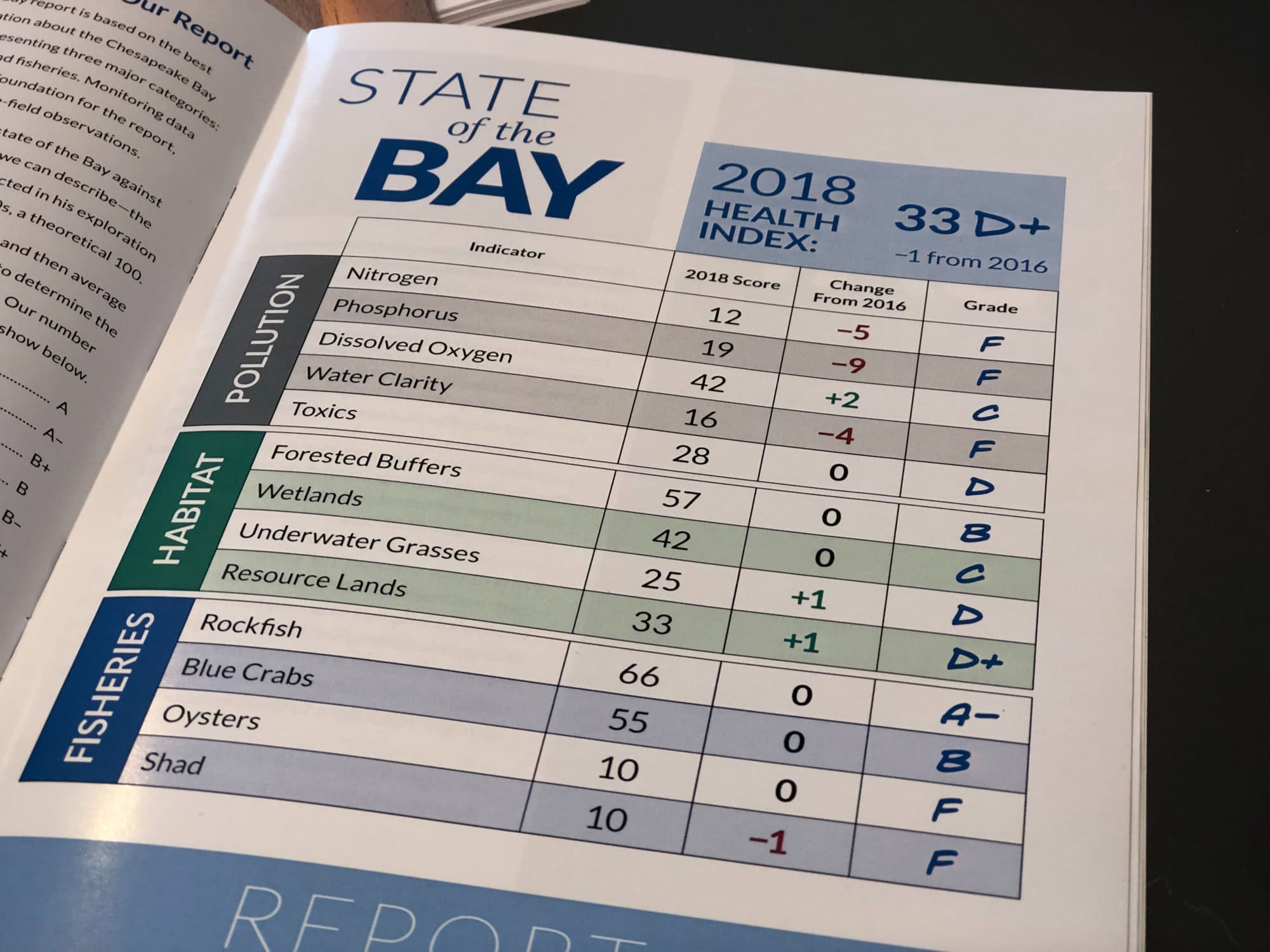
Maryland Gov. Larry Hogan said in August that Pennsylvania and New York need to “step up” and do more to reduce pollution into the Susquehanna River, which flows into the Chesapeake Bay watershed.
Baker said on Monday, when the State of the Bay report was released, “Cleaning up the water in Pennsylvania is good for Pennsylvania, and it’s good for the bay downstream.”
While the number of acres where bay grasses are found in the bay has grown, the rating in that category is still at a D, and in the area of fisheries, the report gives the status of oysters and shad an F.
Baker said that while the drop in rating should serve as a reminder that there’s a lot of work to be done to make a healthier Chesapeake Bay, it’s not all gloom and doom — the cleanup effort in the Chesapeake Bay, he said, is seen as a model around the world.
“The long term trends are getting better,” Baker said, noting that while population in the watershed has doubled, progress on cutting pollution and protecting the bay is being made. “The worst thing we could do now is give up. We have to follow the science and keep doing what works.”
Baker also criticized President Donald Trump’s policies affecting the environment and denial of climate change.
To improve the bay’s health, Baker said jurisdictions in the bay’s watershed, including Delaware, Maryland, New York, Pennsylvania, Virginia, West Virginia and the District of Columbia, must meet clean water goals set for 2025.
“Second, the Trump administration must stop trying to eliminate environmental laws and regulations that have enjoyed decades of bipartisan support, and third climate change must be addressed now,” Baker said.
The Associated Press contributed to this report.








